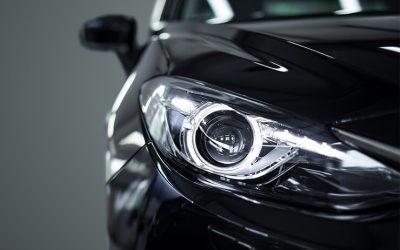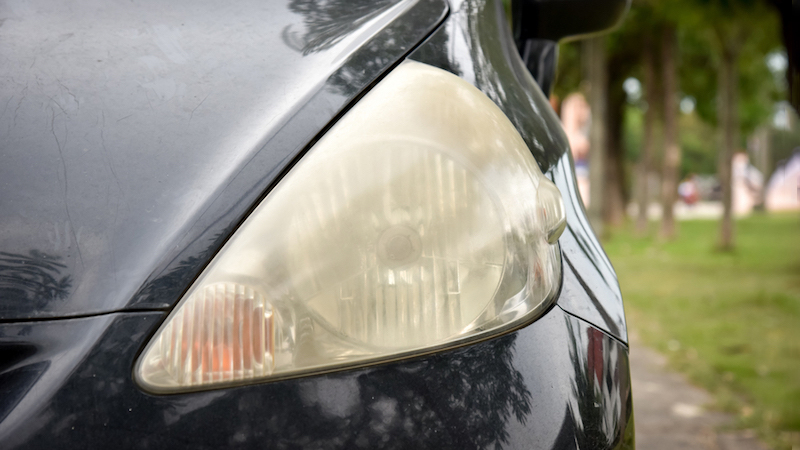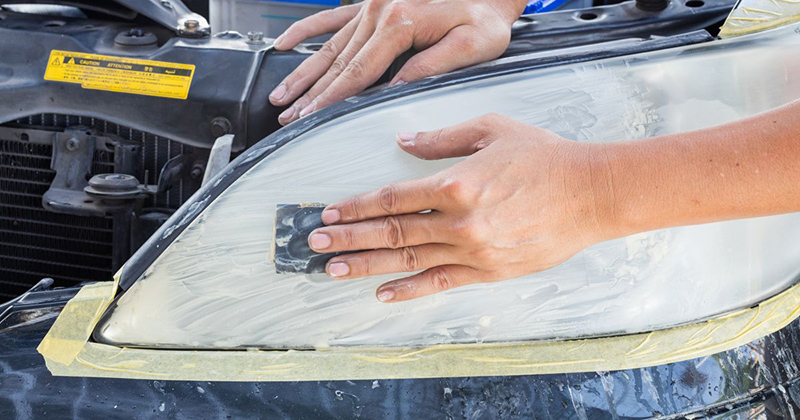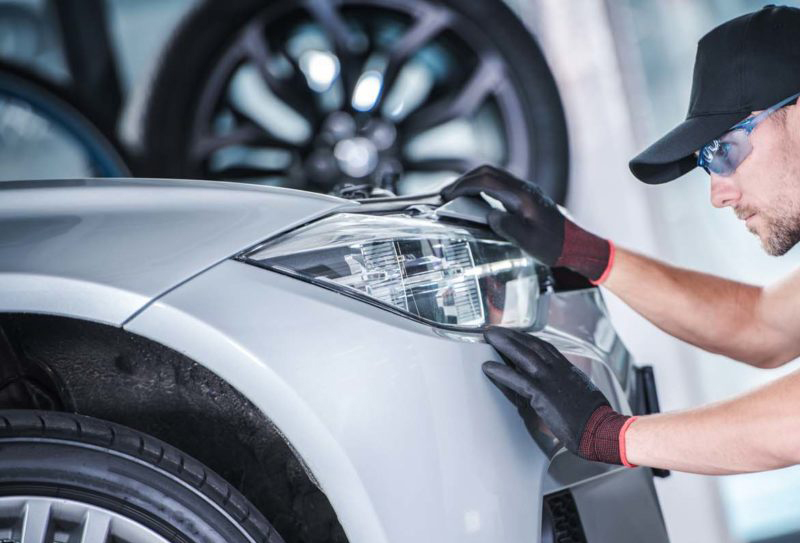The average lifespan of registered vehicles in the United States is about 12 years. Headlight lenses made of polycarbonate, or plastic, begin to yellow and otherwise show signs of deterioration after 3 to 7 years of use.
Why Do Your Headlights Become Foggy?
Both time and the environment may take their toll on your headlights. Headlight lenses become foggy or cloudy for several reasons:
1. Oxidization
Typically, headlight lenses are coated with a clear layer to prevent oxidation. However, the coating gradually wears off and the headlights oxidize when exposed to UV rays from the sun.
2. Wear and tear
Your headlights may take a beating from gravel, road salt, and other debris that gets kicked up as you cruise down the road. This flying debris wears down the protective coating and creates pits and scratches on your headlights, adding to their foggy and cloudy appearance.
3. Dirt and chemicals
After driving your vehicle for miles on the road, you may notice a thin layer of dirt and chemicals forming on your headlight lenses. This opaque layer dims the beam coming from your headlights and greatly affects driving safety at night.
4. Water vapor
Headlights come with a watertight seal to keep moisture out. However, condensation can form inside the headlight housing if this seal breaks. Water droplets are not easily wiped off, and therefore scatter light from the bulb, further impairing nighttime visibility.
Yellow and foggy headlight lenses generally result in a noticeable decrease in light output. One research shows that deteriorated headlights - found on millions of vehicles on the road today - reduce the amount of light output by nearly 80% as compared to new lenses. With 50% of crashes occurring at night, drivers cannot afford any reduction in visibility. Properly functioning headlights are the key to safe driving, so as soon as you notice the performance of your car headlights start to diminish it’s time to clean or replace them.
The simple act of regular cleaning is efficient and effective, but the effects may not last long. Furthermore, the chemicals you use to clean may break down the protective coating and accelerate the oxidation of your headlights. It doesn't mean you shouldn't clean your headlights, but you should also consider headlight restoration or replacement.
Is It Better to Restore Your Headlights or Replace Them?
Restoring headlights is a cost-effective option that can return light output to about 70% of that of new headlights. This process may cost between $20 and $190, depending on whether it is done professionally or by the driver with a headlight restoration kit purchased at a local automotive parts store.
There are a variety of headlight restoration kits that you can try to clean the fogginess yourself. The process typically includes several steps. You need to sand the headlight lenses with a light abrasive, then polish and coat them with a sealant that’s supposed to keep them clear. Results may vary based on the restoration kit you choose or the amount of cloudiness on the lens. It is also important to use these kits with care. Headlight lens surfaces are often close to paint or other trim pieces, and scratching those may add many dollars to the repair bill.
An increasing number of repair shops and auto dealers provide headlight restoration services. Prices generally vary widely, and so might the effectiveness and durability of the products and services offered. Ultimately, restoring foggy and cloudy headlight lenses to the original or near-original conditions can be similar to an older person getting cataract surgery and regaining some of the vision they once had.
Replacing headlights will always be better than restoring them. According to research, aftermarket headlights can restore light output to between 83% and 90% of the original unit, a greater improvement than headlight restoration. Also, new headlights will last much longer than any other form of restoration. In addition to lenses, all other components that make up the headlight are also new, so visibility is much clearer. One pair of new headlights gives the owner peace of mind that everything related to headlights has been dealt with and shouldn’t be a bother anymore.
The big downside of replacing headlights is the cost of purchasing new ones. This will depend on the make and model of your car. That said, replacement can cost anywhere from $130 to $430, depending on the type of part you select (original or aftermarket), and the installation method you choose (professional or do-it-yourself). Either way, it is inevitable that headlight replacement will cost the owner a considerable amount.
Whether it's replacing or restoring headlights, the results will not last forever. Eventually, the headlights will be damaged and become cloudy due to oxidation. The difference is the life cycle of each method used. Replacing new headlights will get you a cycle of about 5 years or more, while restoration may last one to three years, depending on the maintenance and the climate conditions in your part of the world.
Conclusion
With all of these factors in mind, we would still recommend replacing headlights, as the benefits greatly outweigh the negatives. We simply acknowledge the fact that replacement is better than restoration. That being said restoration is the second-best alternative to replacing headlights. Restoration can offer great results at a bargain. It’s better than having your headlights damaged or in poor condition.
Whether replacing or restoring headlights, the overall objective is to have the car looking great and functioning properly. With both approaches, the end goal is achieved and that’s what counts. The final choice is yours.





